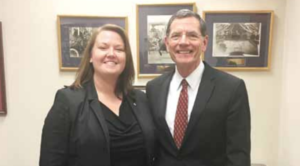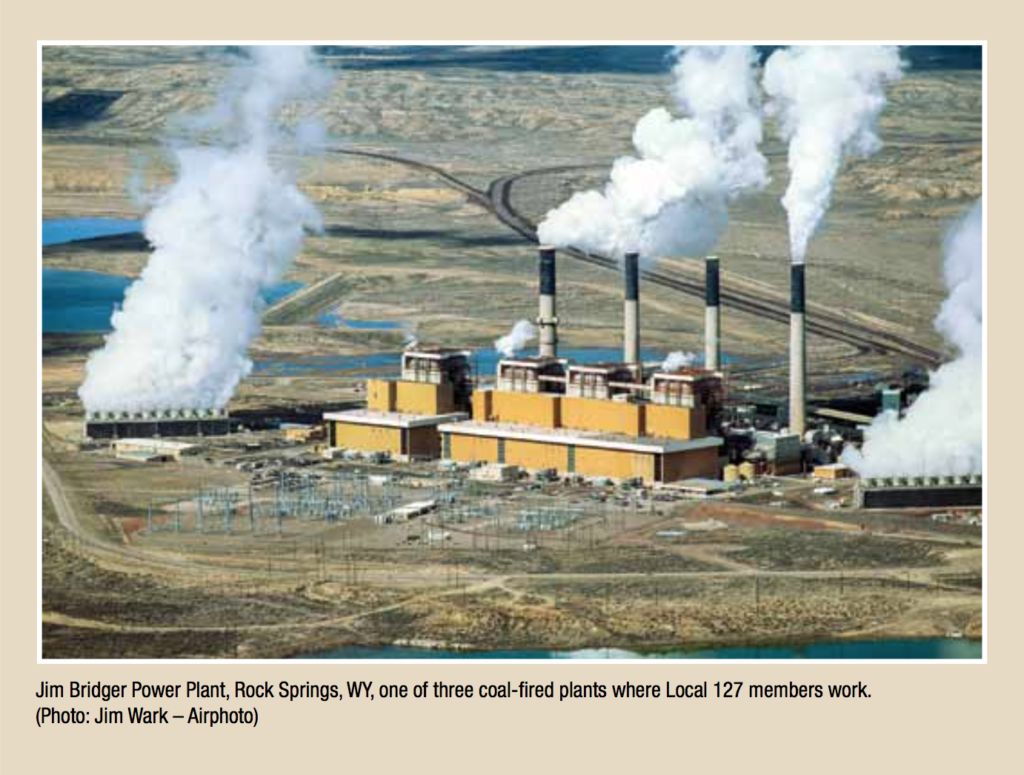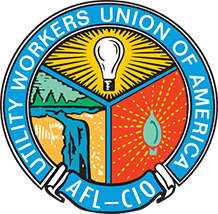Utility Workers Local 127 Fights for the FUTURE of Coal
A large, rural state known for beautiful landscapes and abundant wildlife, Wyoming is also the heart of energy country, with vast coal reserves from the Powder River Basin to the Red Desert driving energy production in power plants across the country, and oil and gas fields throughout the state. This energy sector powers the regional economy by providing tens of thousands of jobs, both directly and indirectly, in a financial landscape that is otherwise dependent on ranching and tourism.
Coal politics
Because of this, Wyoming has come to occupy a central role in the politics of the coal industry over the last few months. That national prominence led UWUA Local 127 Financial Secretary-Treasurer, Chauffe Schirmer, to take time out of her busy life and travel to Washington, D.C. in November to meet with two of Wyoming’s highest elected officials, Senator John Barrasso, and Senator Mike Enzi. Advocating on behalf of her local’s membership, whose jobs and communities rely on an economically viable future for coal, Chauffe put a real face on a regional economy that people in other parts of the country only know about in the abstract.
Spread out across the state, Local 127 members work in three coal-fired generating stations in Wyoming: the Jim Bridger facility in Point of Rocks, the Dave Johnston plant in Glenrock, and the Wyodak plant in Gillette. Additionally, 127 members work in small towns and rural areas across Wyoming, doing line work to repair and maintain the grid state-wide making the local one of the best sources of high-quality jobs throughout the Cowboy State.
The UWUA has long supported technology designed to reduce carbon dioxide emissions from industrial sources including both coal and gas-fired power plants, as well as heavy industrial sources such as ethanol production, steel mills, and cement manufacturing, for example. As such, the National Union has been a leading labor voice for the FUTURE Act – bipartisan legislation aimed at giving a tax credit to companies that successfully capture carbon dioxide emissions and then quarantine those emissions by piping them into the ground, either for the purpose of extracting oil and gas from otherwise non-producing fields, or simply to store it away.
Carbon capture’s worth
Either way, these emissions are prevented from entering the atmosphere and the carbon math shows a net positive environmental effect, as evidenced by support for the concept from national environmental organizations such as the Natural Resources Defense Council (NRDC) and the Clean Air Task Force (CATF).
 Speaking about her personal meeting with Senator Barrasso, Chauffe said “I felt like the Senator really understood the importance of our jobs in the plants and out on the lines to the communities where we live. Without the high-quality jobs that our union has fought for, the economy in these rural areas simply would not work. Our wages, and the plants’ taxes support schools, local first responders, and small businesses all over Wyoming. The Senator knows that, and he committed to fighting for our industry and for our jobs.”
Speaking about her personal meeting with Senator Barrasso, Chauffe said “I felt like the Senator really understood the importance of our jobs in the plants and out on the lines to the communities where we live. Without the high-quality jobs that our union has fought for, the economy in these rural areas simply would not work. Our wages, and the plants’ taxes support schools, local first responders, and small businesses all over Wyoming. The Senator knows that, and he committed to fighting for our industry and for our jobs.”
Caught up in the ongoing national debate over broad tax reform, news broke just prior to Chauffe’s arrival in DC that the tax credit for carbon capture described by the FUTURE Act would be pulled out of the larger bill and put onto a parallel track, along with several other energy measures supporting advanced nuclear power, liquid bio-fuels, and a variety of smaller, renewable energy sources.
With the commitment of senior Republican leadership in the Senate to move this separate tax package to a vote near the end of the year, the initiative is picking up speed. As a senior member of the Senate committee debating the larger tax measure, Senator Mike Enzi’s office also voiced strong support for the carbon capture tax incentive, and vowed to aggressively push it forward along with the other energy tax initiatives.
In a state like Wyoming with oil and gas fields that perpetually move through boom and bust cycles, the prospect of carbon capture technology to make a brighter future for power plants also translates into jobs in those industries as well. With many oil and gas producers going through layoffs across the state due to higher extraction costs and depressed energy market prices, the prospect of using carbon dioxide to change the economics of energy extraction would also mean thousands of Wyoming residents having the potential to return to work on the rigs – all while putting more carbon in the ground than they are taking out.

Potential game changer
Further, for coal-fired power plants coping with ever-shifting economics, the ability to either sell carbon emissions to industrial users or receive a tax credit for putting them in the ground is a potential game changer.
For Wyoming, traditional energy production has long been a way of life, one that communities hope to continue for many years. Reflecting on this, Chauffe said, “I work in the Bridger plant along with my brother, and our parents retired from the plant. For us, coal has been the family business, the business that holds our community together. And I’m proud of Local 127 for its long history of fighting for these high-quality jobs, a legacy that could remain for generations.”
With ever-advancing technology, forward-thinking political leadership, and the support of committed workers and communities, there’s no reason why that shouldn’t continue to be the case for many years to come – in Wyoming, and across the country.

